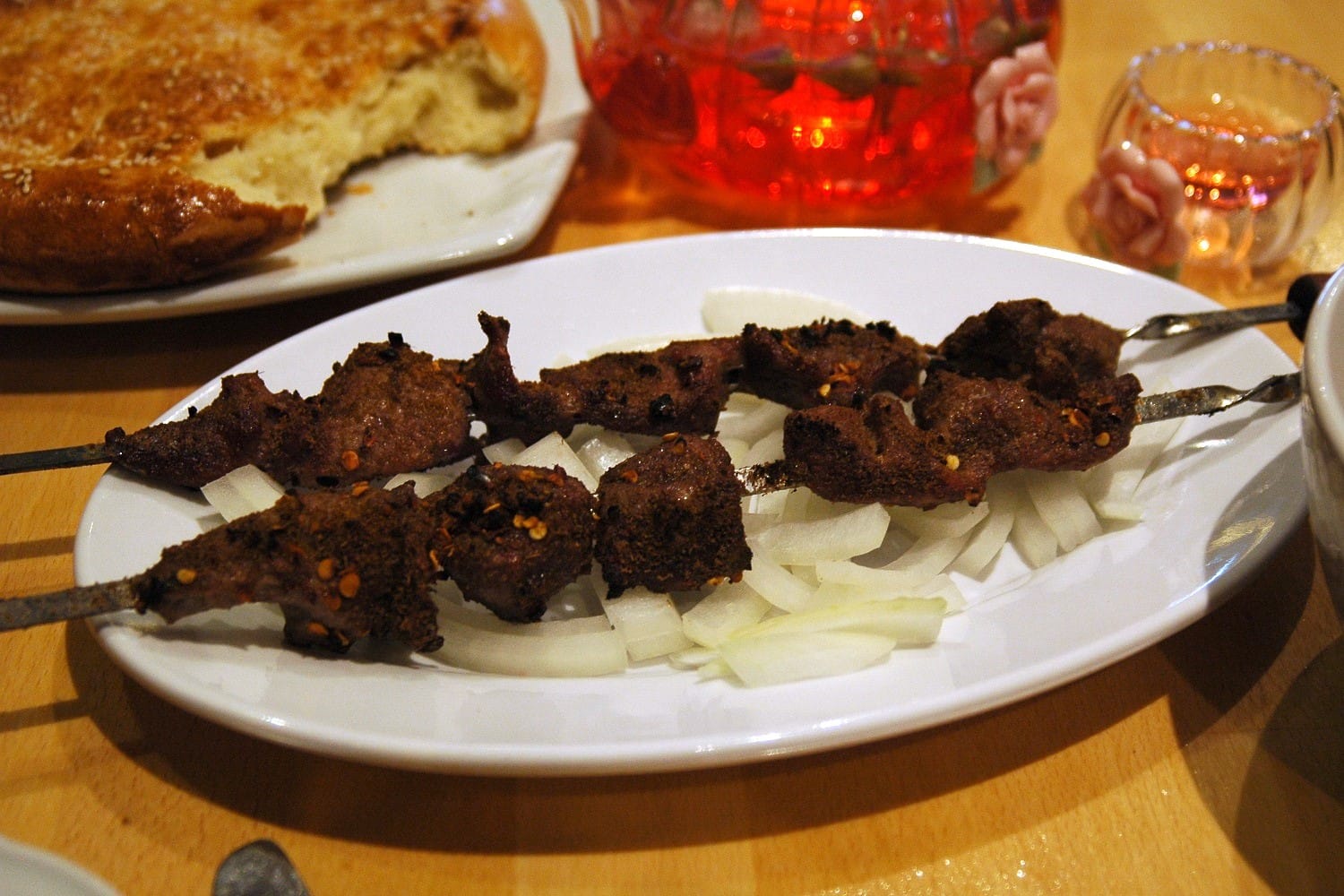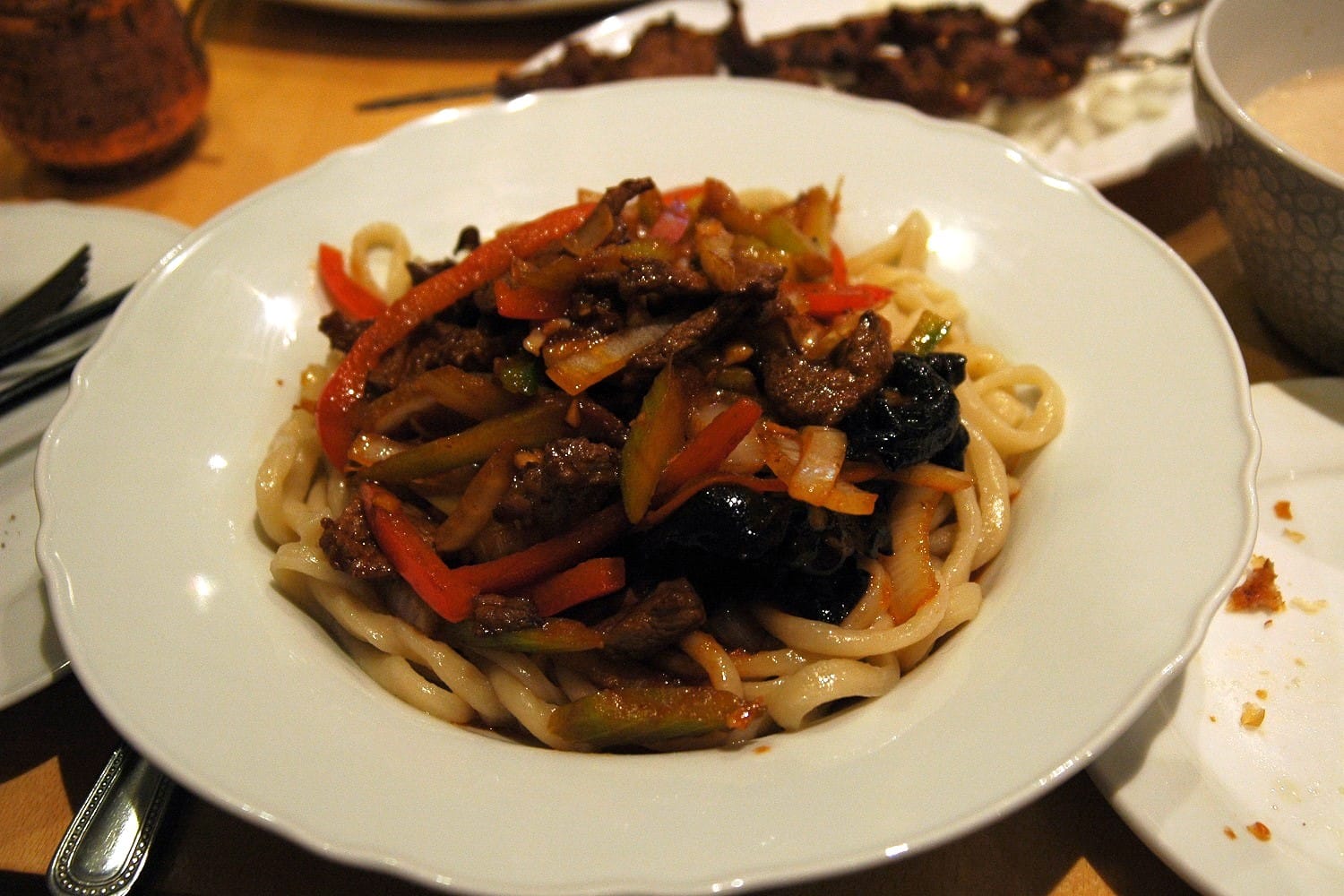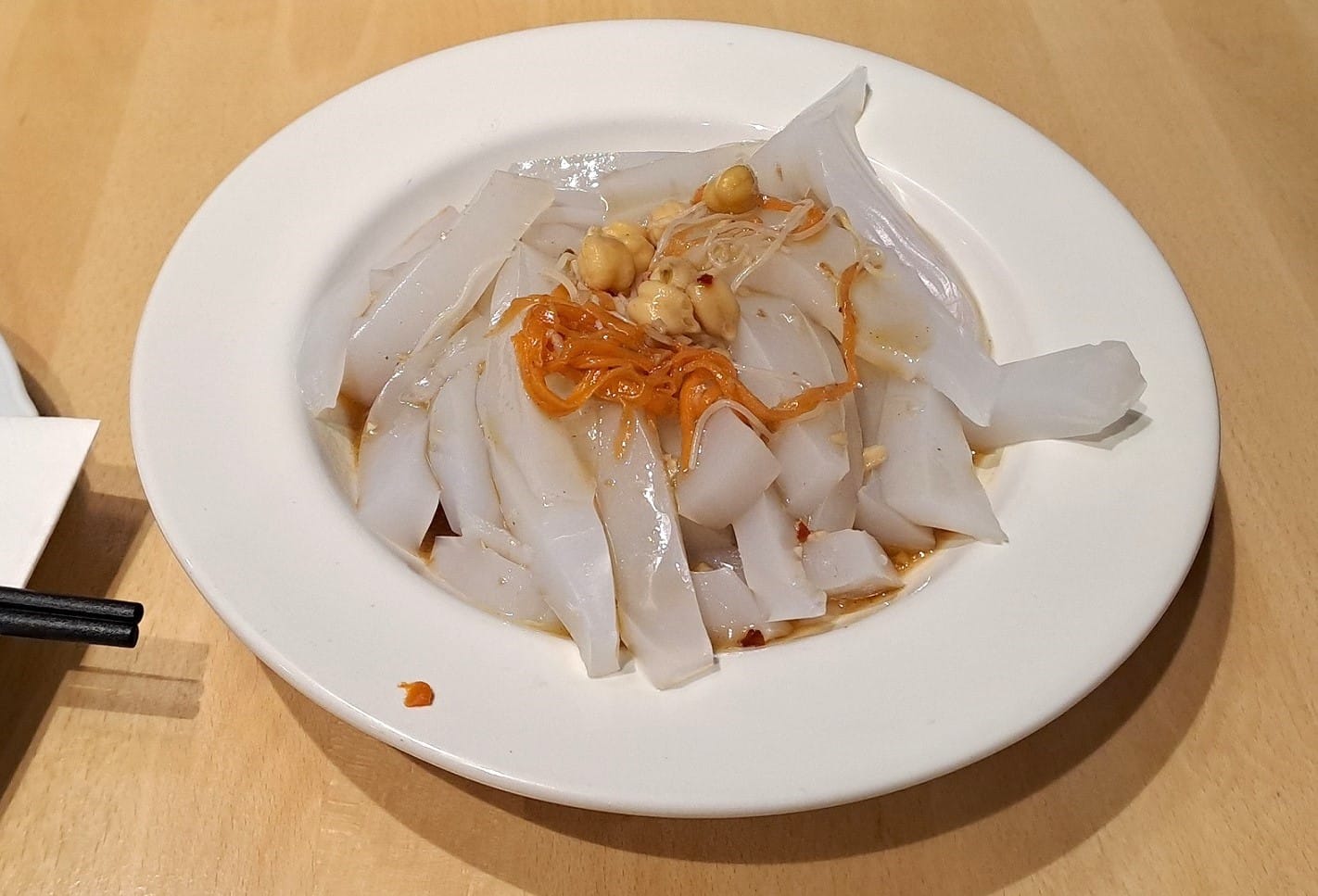What’s the best way to tell area residents about plans for a new asylum shelter nearby?
The government should tell communities directly about plans for new asylum shelters, some activists and politicians say.
Skewers with a spicy bean jelly. Salty milk tea. The range is part of the draw, says Afanti co-owner Eleanor Halmurat.

Uyghur folk music floats out the front doors of Afanti restaurant on the corner of Cavendish Row and Parnell Street. The winding melody of a double-reeded balaman races around the strums of dutars and the elated singing of a male voice.
On a countertop just inside is a big glass container of rose-red tea and vases of flowers.
A carpet hangs on one of the walls. The carpets are from the town of Hotan in the Xinjiang region in north-west China, says Halnur Halmurat, the co-owner of Afanti. “They were made by hand.”
Above the carpet are four square black-and-golden doppa, the hats worn traditionally by Uyghur men.
Running along the opposite wall, decorative artwork gives a wordless guide to what is on this restaurant’s menu. One woman tucks into steamed dumplings. another sips from a bowl of salty milk tea, and a trio of women prepare long, thick noodles from scratch.
Towards the back of the dining area, there’s a cartoonish picture of a bearded man with a joyful face brandishing three meat skewers.
His likeness is etched onto each of the tables. He is Nasreddin Hodja, a satirical character from Islamic folklore, says Afanti co-owner Eleanor Halmurat. “He would travel around on a donkey making people laugh.”
In China, the character of Nasreddin is known by his Uyghur name Afanti, which loosely translates to “mister”, she says. “And we chose that name because straight away, Chinese people will know this is Uyghur.”
Eleanor Halmurat and her sister Halnur bring two teas to one of the tables – a bowl of sut chai or milk tea, and the rose tea, served from a glass pot with petals floating on its surface.
The milk tea is paired with a seven-inch circular flatbread, covered in sesame seeds, for dipping.
The rose tea is fragrant and a little sweet. The milk tea deviates from the Irish style, she says. “Ours has salt and we put fresh cream in it.”

Halnur thinks that Afanti is the city’s first Uyghur restaurant, she said last Thursday, and she and her sister took a seat to talk, just as they were opening at 4pm. “It’s here ten days so far.”
Eleanor has lived in Dublin for almost 20 years, she says. “Back then, there were few Uyghur. But we’ve met more students who have been here for around five years now.”
The idea for the family-run evening-dining business stemmed from a restaurant Halnur and their mother ran in Munich’s city centre, Halnur says. “We lived there for a few years until 2019.”
When Halnur and her mother returned to Dublin, they sensed an opportunity to try to pursue something similar here, she says. “There were more Uyghur people, and Chinese who were very interested in our dishes.”
They set their sights on the Parnell Street area, she says. “But we were trying for years. It was hard to get a place.”
Parnell and nearby Capel Street have for years boasted a richness of restaurants offering Chinese and Korean cuisines, and Vietnamese, Thai and Japanese too.
Uyghur has been missing. “Most countries had a Uyghur restaurant, and the only place lacking was Dublin,” says Eleanor.
The Halnurs bring out two samsas, fat round pastries, with crispy shells. They’re loaded with beef and stewed onion, and juicy and peppery and piping hot.
The menu was chosen to give customers a taste of traditional Uyghur cuisine, Eleanor says.
She points to two dishes in particular: the kebab skewers and the hand-pulled noodles, mixed peppers and beef known as leghmen.


Served as a trio, the kawap, or lamb skewers are barbecued and covered in a blend of potent spices.
The noodles, meanwhile, are thick and chewy. Not dissimilar to Japanese udon.
They are pulled and stretched from dough by hand, Eleanor says. “I never had time to learn because my mum cooks them all the time, and she comes in here every morning to prepare them.”
More commonly, the leghmen is served with lamb, Eleanor says. But in Afanti they have opted instead to use fried beef, which is mixed with black mushrooms and a sweet sauce, made from garlic, onion, pepper and tomatoes.
The kawap skewers go best with the spicy bean jelly, says Eleanor. “That is a cold dish, and they are normally served together.”
Made from mung beans, the pale white jelly is nearly translucent. It is cut into thick noodle-like strips and served in a tangy sauce, made from vinegar, chilli, soy sauce and pepper, Eleanor says.
It is garnished with thin glassy noodles and chickpeas. It has a mild spiciness, refreshing on a warm day.

The meal is washed down with a light yoghurt, topped off with crushed walnuts and raisins, from a chilled copper mug.
Drawing influence from Central and East Asian cuisines, Uyghur cooking – with its dishes resembling noodle stir fries, kebab skewers or a lamb pilaf – is both familiar and distinct.
The range found on the menu is Afanti is part of the draw, Eleanor says. “We are 10 million people in north-west China, but practice Islam.”
“Our language is similar to Turkish, Uzbek, Kazakh,” she says. “And each of these places has something like pilaf, but each is just slightly different. This is our version.”
Get our latest headlines in one of them, and recommendations for things to do in Dublin in the other.